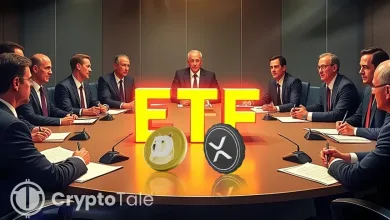DOGE Ends Early as Trump Shifts Toward Fragmented Control

- DOGE closure eight months early, changes efficiency oversight back to individual agencies.
- Personnel moved into existing roles as OPM absorbed DOGE duties and lifted hiring limits.
- AI-focused regulatory review now guides decentralized reforms across federal agencies.
The U.S. government’s Department of Government Efficiency, known as DOGE, was dissolved earlier than planned and with little public notice. Established in January, the agency was scheduled to operate until July 2026. However, it ceased operations eight months early, despite its launch receiving sustained promotion from Trump and Elon Musk across official channels and social media platforms.
A High-Profile Launch That Lost Traction
DOGE opened in January 2025 after Trump signed an executive order establishing a centralized unit focused on rapid government downsizing. The administration promoted the department heavily across social platforms, with frequent appearances by Elon Musk and senior officials. Musk described the initiative as transparent and cost-saving during early public demonstrations.
However, momentum slowed after Musk’s public fallout with Trump in May. He distanced himself from Washington and stopped posting updates related to DOGE operations. By early autumn, Office of Personnel Management (OPM) Director Scott Kupor confirmed DOGE no longer functioned as a separate entity.
Kupor stated the department “doesn’t exist” and no longer operates as a centralized unit. He added that OPM absorbed many of its responsibilities. Consequently, DOGE’s oversight and streamlining operations now fall under traditional agency control.
Although DOGE claimed billions in savings, no detailed accounting supported those figures. Financial experts and auditors highlighted the absence of verifiable public reports.
Oversight Changes and Personnel Realignment
Following DOGE’s closure, senior staff transitioned into existing federal roles. Joe Gebbia, Airbnb co-founder and DOGE contributor, now heads the National Design Studio. The studio focuses on improving federal website presentation and online service accessibility. Edward Coristine encouraged public recruitment efforts during DOGE’s peak activity. His involvement ended alongside the unit’s dissolution.
OPM also lifted the government-wide hiring freeze that DOGE once enforced. Trump originally restricted agency hiring on his first day in office. He later required DOGE approval for most staffing exceptions, limiting agencies to one hire per four departures.
Kupor confirmed that hiring targets no longer exist. By May, over 200,000 workers lost positions, and roughly 75,000 accepted buyouts. Despite those reductions, experts could not verify DOGE’s claimed budget relief.
Related: NYSE Clears Grayscale DOGE and XRP ETFs for Monday Trading
Administrative Change and Market Response
The shutdown shows a change from centralized efficiency mandates toward agency-specific governance. Regulatory analysts now observe that oversight consolidation under DOGE no longer applies. Instead, agencies now handle compliance, workforce planning, and operational reform independently.
This aligns with broader administrative recalibration inside the Trump administration. The focus now includes AI initiatives under the “Genesis Mission” and updated economic reform strategies. Scott Langmack, previously DOGE’s representative at HUD, leads AI development to review federal regulations.
Reuters confirmed the department’s closure, citing Scott Kupor’s official remarks. The agency noted the absence of a formal White House announcement. Despite that silence, administrative documents verified DOGE’s functional end.
Musk last week appeared in Washington at a White House dinner for Saudi Crown Prince Mohammed bin Salman. However, he made no public statement regarding DOGE’s status.
Trump’s administration continues efforts to reduce regulations and improve federal efficiency. Although DOGE closed, its aggressive approach influenced staffing policies and oversight structure. The current model relies on distributed agency control rather than centralized enforcement.
The fast rise and quiet end of DOGE reshaped federal governance direction. Internal restructuring, reassigned authority, and strategic realignment define this transition. Officials confirmed agency-led reform now guides federal efficiency planning.





